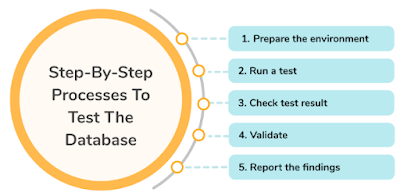1. Verify that the database is able to store and retrieve data correctly.
2. Check that the database is able to handle multiple users simultaneously without any data loss or corruption.
3. Test the database's security features to ensure that unauthorized users cannot access or manipulate the data.
4. Verify that the database is able to handle a large volume of data without performance degradation.
5. Test the database's performance and scalability under various workloads and scenarios.
6. Check that the database is able to integrate with other systems and applications as needed.
7. Test the database's query and search functionality to ensure that it can retrieve the required data efficiently.
8. Test the database's ability to handle real-time data updates and changes.
9. Test the database's ability to handle multiple concurrent users and transactions.
10. Test the database's security measures, including user authentication and authorization.
11. Verify that data can be inserted into the database successfully.
12. Verify that data can be retrieved from the database accurately and efficiently.
13. Verify that data can be updated in the database without causing any errors or inconsistencies.
14. Verify that data can be deleted from the database without affecting the integrity of the remaining data.
15. Verify that database queries can handle null values properly.
16. Verify that database backups are being performed regularly and can be restored successfully in case of data loss.
17. Test the database's security measures to ensure that unauthorized users cannot access sensitive information.
18. Test the database's ability to integrate with other systems and applications, including data transfer and interoperability.
19. Test the database's support for different data types and formats, including text, numbers, images, and multimedia.
20. Test the database's performance under different workloads and scenarios to ensure it can handle high-demand situations.
👋 Hi, I'm Suriya — QA Engineer with 4+ years of experience in manual, API & automation testing.
📬 Contact Me | LinkedIn | GitHub
📌 Follow for: Real-Time Test Cases, Bug Reports, Selenium Frameworks.



No comments:
Post a Comment